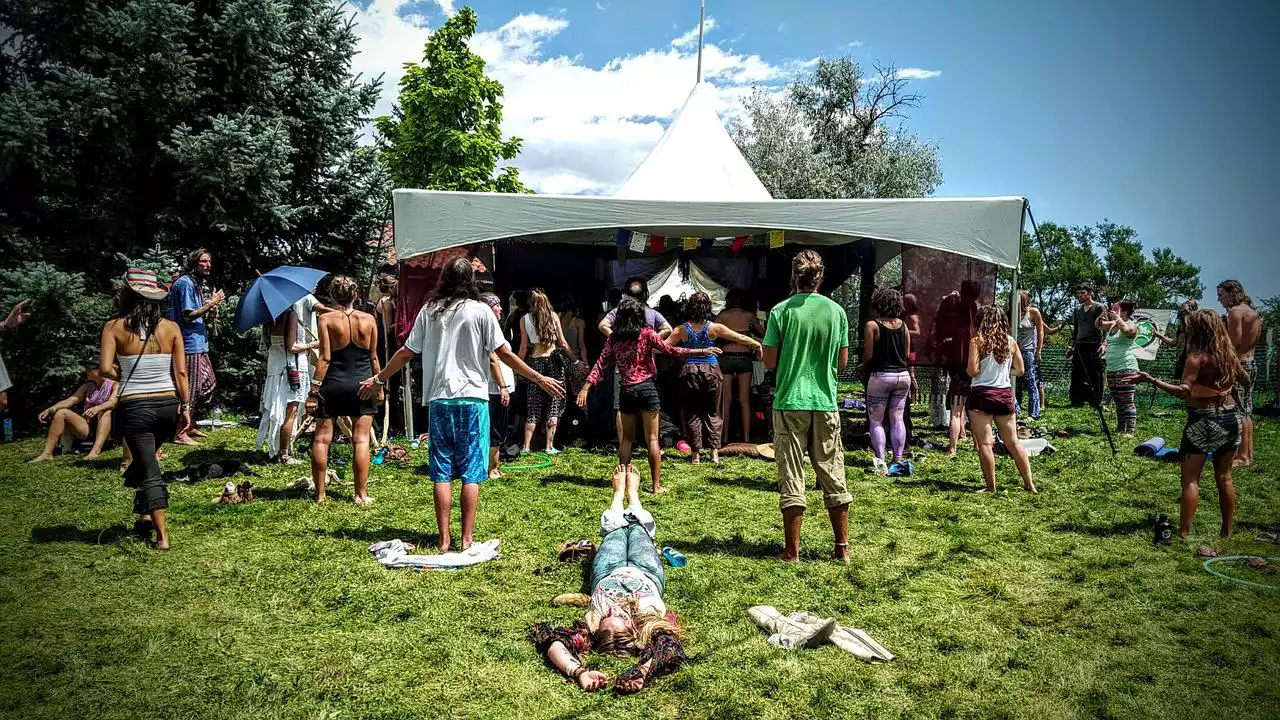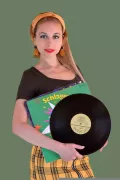The nineteen sixties was a turbulent decade, and nowhere is this clearer than in the world of pop culture. With the Civil Rights Movement and Women’s Rights movement gaining momentum, along with an escalation in tensions between the Eastern and Western blocs of the Cold War, it’s hardly surprising that pop culture in the sixties was marked by so much change. The social upheaval at this time led to many subcultures emerging as people tried to find ways to express themselves outside of mainstream society. These included mods, rockers, hippies, New Romantics and many more. The result was a climate where anything went, both culturally and fashion wise. From the Beatles to Bob Dylan; Twiggy to Tina Turner, all these icons provided us with some of the most exciting looks of all time.
The Beatles and British Invasion
The Beatles are the single most influential pop music act in history, and their appeal was so great that they became an embodiment of the British Invasion. The Beatles were hugely successful from 1963 to 1970, and with John Lennon, Paul McCartney, George Harrison and Ringo Starr on vocals and guitar, bass guitar, drums and vocals respectively; The Beatles have been one of the best-selling music artists of all time. The group’s initial style was rooted in 1950s rock ‘n’ roll and early American rockabilly. However, as they grew more ambitious musically during the 1960s, they played around with various genres such as psychedelia and hard rock. Their early 1968 release The White Album is ranked by various critics as one of the best albums ever recorded.
The Beatles - British Invasion
Women’s Rights Movement and Fashion
The nineteen sixties saw the emergence of a powerful Women’s Rights Movement. From the Twiggy look to the rise of feminism, clothing had a huge part to play in this. The miniskirt worn by British model and actress Twiggy Lawson in 1966 was one of the key fashion trends from this decade. It became an international sensation, permanently changing what women wore for decades to come. The arrival of the mini-skirt also transformed attitudes about female sexuality, and brought about a new era of sexual liberation for women, as shown by the release of controversial pop song ‘Sheila Take A Bow’ in 1966 with lyrics such as ‘You say you want a revolution, well you know that we all want to change your mind’. This era also saw significant progress in gender equality, not least because it was an era where women were more likely to find jobs than ever before. In 1960, more married women were working than single women; by 1975, there were three times as many single women working than married ones! Clothing played a crucial role in this, while dresses may have been popular on formal occasions at home or abroad (particularly among high society), they tended not to be considered appropriate attire for day-to-day life. As people started wearing skirts during the day instead of just at night, and often paired them with trousers or jeans, they were able to express themselves more freely.
Fashion of 1960s Women
Hippie Culture
One of the most enduring fashion subcultures from this era was the hippie movement. This was a collective term for people with a strong interest in peace, love and freedom. A lot of these people were open about their use of drugs and this attracted many other members to their ranks who were looking for a way to rebel against mainstream society. Hippies often wore their hair long and loose, they experimented with all sorts of different clothing styles (including brightly colored, tie-dye fabrics), they rejected all forms of body hair removal and they shunned any form of makeup or conventional beauty practices like wearing bras or shaving their legs.
Hippie Music BEST of 60`s - FLOWER POWER Age Greatest songs
Psychedelic Fashions
If there’s one word that sums up the nineteen-sixties in terms of fashion, it’s psychedelic. Psychedelic fashions emerged as a direct result of the drug culture and free love movement that was also prevalent at this time. These included bell-bottom trousers, paisley shirts, brightly colored patterned dresses, miniskirts and plenty more.
Where the 1960s "psychedelic" look came from
Rockers and Mods
With the advent of The Beatles, rock and roll was born. But it wasn’t long before a divide emerged between the two camps, Rockers and Mods. Rockers wanted to keep the spirit of rock alive, whereas Mods were more interested in fashion and style. Despite this division, Mod culture was hugely influential in the sixties. Mods always dressed smartly and with flair, and their interest in fashion saw them infuse traditional styles of clothing with mod-style elements including color blocking, clashing patterns and fitted blazers. The Rise of Beatlemania In 1963 John Lennon led an interview with a British journalist who asked him to name Britain’s most popular group? “The Beatles” he replied. This simple answer would resonate for years to come as The Beatles’ popularity grew exponentially. From their humble beginnings playing clubs in Liverpool to becoming one of the biggest bands ever, by 1965 they had sold an estimated 5 million records in America alone! Outside of music, Beatlemania also helped transform fashion; thanks to their influence on style throughout the sixties we now have iconic looks like flares and collarless jackets. The Beatles weren’t just musical icons, they changed pop culture forever!


 How to Choose the Best Convertible Crib
How to Choose the Best Convertible Crib
 Fishing and Hunting Licenses for Outdoor Enthusiasts - A Perfect Present for Every Adventurer
Fishing and Hunting Licenses for Outdoor Enthusiasts - A Perfect Present for Every Adventurer The Ultimate Gift Guide: Uncover the Perfect Presents for Men Born in February
The Ultimate Gift Guide: Uncover the Perfect Presents for Men Born in February From Love to Revolution: Exploring the Meaning Behind The Beatles' Top Songs
From Love to Revolution: Exploring the Meaning Behind The Beatles' Top Songs Bob Marley's Final Message
Bob Marley's Final Message Legends of Folk Music
Legends of Folk Music 20 60s Love Songs
20 60s Love Songs Top No. 1 Hits that Defined the 1960s Music
Top No. 1 Hits that Defined the 1960s Music Drugs and the Connection to Music in the 1960s
Drugs and the Connection to Music in the 1960s Different Styles of Contemporary Music in the 1960s
Different Styles of Contemporary Music in the 1960s All about the Birth of Pop Music in the 1960s
All about the Birth of Pop Music in the 1960s Music and Evolution in the 1960s
Music and Evolution in the 1960s